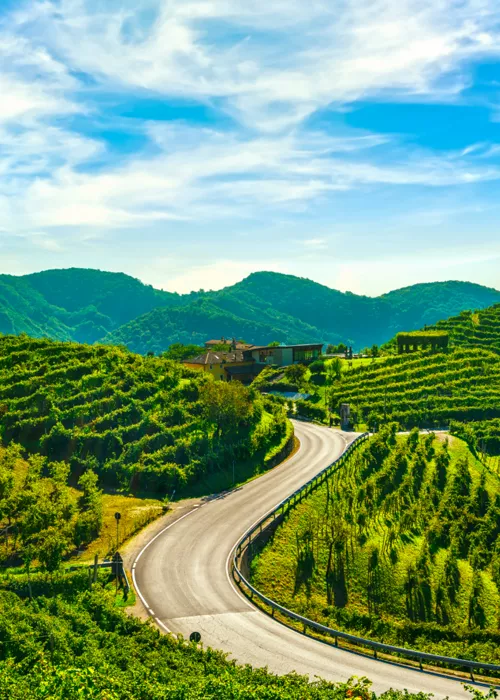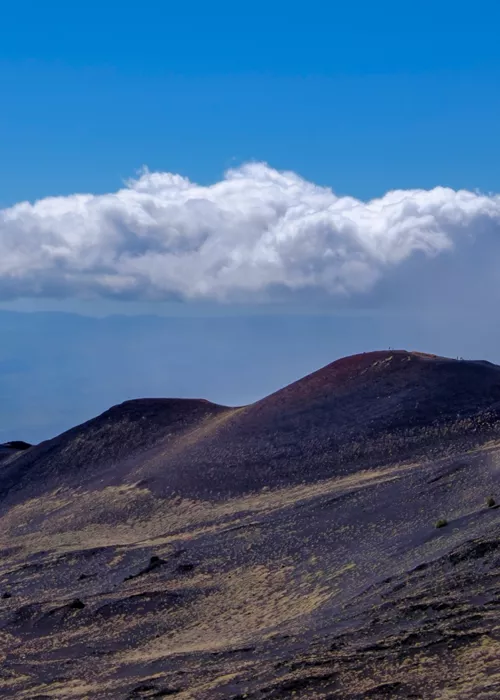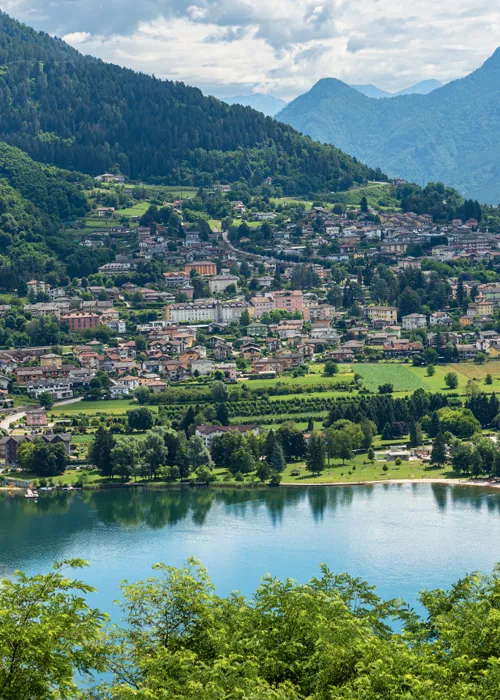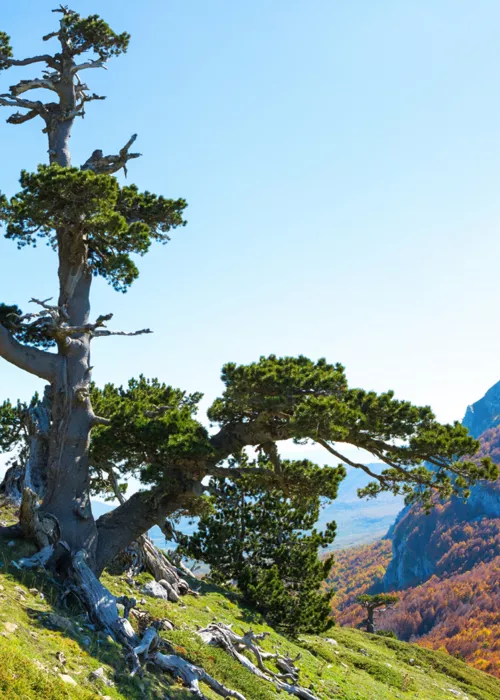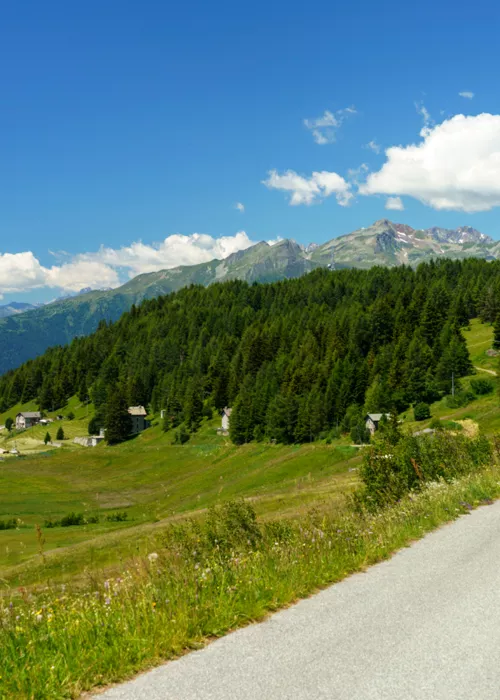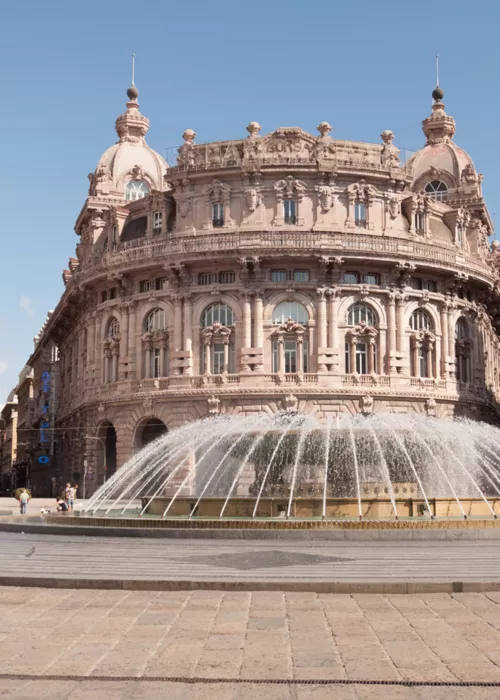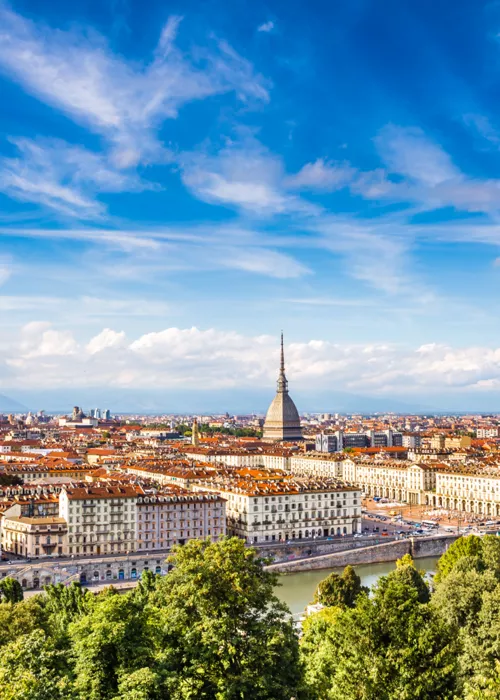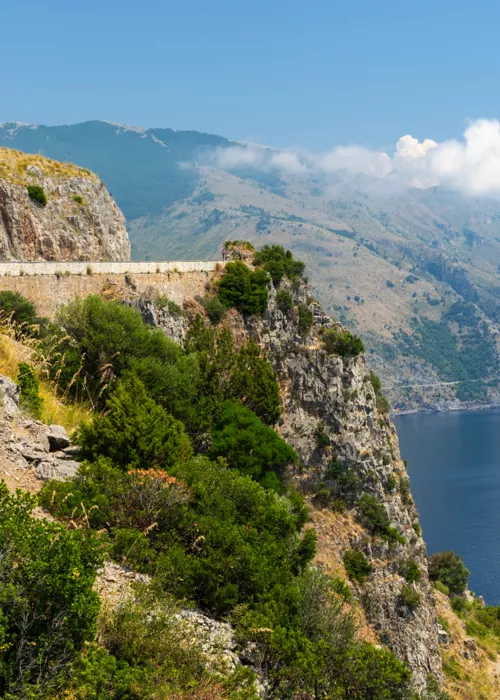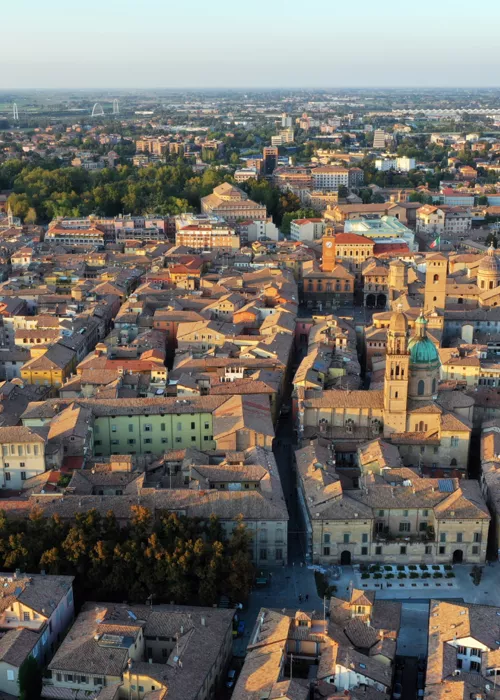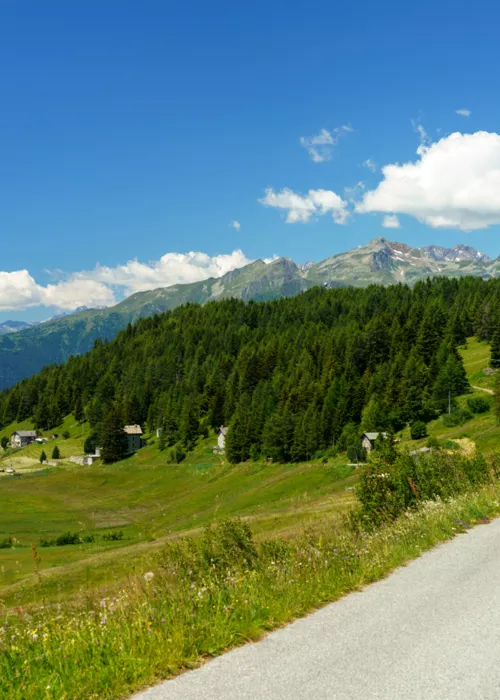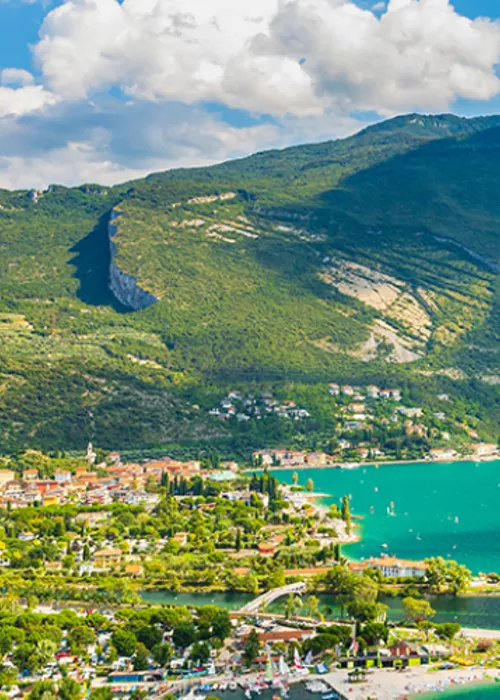Curon Venosta (Graun im Vinschgau)

Descending from the Reschen Pass towards the south, on the border between Italy and Austria, the Vinschgau Valley cycle path skirts the shores of Lake Reschen, a small artificial lake
The story goes that, after the Second World War, it was decided to dam the course of the Adige River and create a small artificial basin to generate hydroelectric power. The oldest part of the municipality of Curon Venosta, which was located on the valley floor, was sacrificed and flooded by water, with the inhabitants obliged to abandon their homes.
You must therefore approach the eastern shore of the lake to photograph one of the best known landscapes in the entire Alto Adige region. The exodus from the old village is symbolised by the striking tall bell tower of the old parish church, which still rises out of the water, reflecting in the lake, an image of surreal and magical beauty.
Built after the creation of the reservoir, the present-day town of Curon Venosta has a modern appearance and the shores of Lake Resia are mainly frequented and loved by kite surfers and other water sports enthusiasts.
From Curon Venosta, towards the east, the Vallelunga rises. An area of unspoilt nature that merits a slight detour, if only to taste the delicious Kaiserschmarren served at the Maseben Refuge: a typical South Tyrolean cake similar to a crêpe, eaten together with jam and fruit.
Monte Maria Abbey (Abtei Marienberg)

Coming from Curon Venosta and passing Lake Muta, the younger sibling of Lake Resia, it only takes a few kilometres of downhill road to reach Burgusio, a district of the municipality of Malles Venosta.
At the foot of a dense forest lies the white Monte Maria Abbey, one of the best known and most recognisable monuments in the Vinschgau valley, so it is worth a slight detour from the Adige cycle path to reach it.
The Abbey was founded in the 12th century when the noble Tarasp family from the lower Engadine, in what is now Switzerland, financed its construction on the site of an ancient chapel dedicated to the Virgin Mary (hence the name Monte Maria). Perched on the slopes of the mountain at an altitude of about 1,340 m, Monte Maria is still a monastery of the Benedictine order. One of the oldest and most significant places of worship in the region, the abbey instantly conveys a feeling of profound well-being. Despite its imposing appearance of its high outer walls, almost making it look more like a fortress than a place of worship, once past the entrance door you walk into a hushed atmosphere among the beautifully frescoed walls of the crypt of the main church.
The monastery is surrounded by one of Europe's highest vineyards, which benefits from the mild, sunny microclimate typical of the Vinschgau Valley. In the Monte Maria Abbey cafeteria, you can taste the excellent locally produced white wines, made from fine grape varieties such as Cabernet Cortis and Solaris, accompanied by sweet or savoury dishes.
Malles Venosta (Mals im Vinschgau)

Three lateral valleys merge in the area of Malles Venosta, one of the most important towns in the valley, at an altitude of around 1,050 metres, less than five kilometres by bicycle from the Monte Maria Abbey. For centuries, its geographical position made this town one of the busiest road junctions on the route from Italy up to Austria and Germany.
Impressive bell towers and stone towers, clearly visible even from afar, welcome the traveller to Malles Venosta. The town community also visually displayed its pre-eminent role in the trade and politics of the Vinschgau Valley. A number of mansions that once belonged to the local aristocracy, together with the mighty Fröhlich tower, make for a surprising and particularly pleasant visit, but the real cultural jewel of Malles Venosta is the Church of San Benedetto, frescoed with extraordinary paintings from the Carolingian era dating back to the 9th century.
If you want to taste authentic South Tyrolean flavours, you can take a break at the Bio Hotel Panorama, a hotel that not only offers comfortable rooms for your stay, but also serves many zero-kilometre products, which you can taste while enjoying a broad panoramic view of the peaks of the Ortles-Cevedale massif. To buy the excellent cheeses of different ages from the Englhorn cheese dairy, you have to go to the nearby Clusio district.
Glorenza (Glurns)

The same mediaeval atmosphere, already seen among the sights of Malles Venosta, can be found in an equally fascinating guise in Glorenza, a small town on the left bank of the Adige River located at 907 metres above sea level, whose 16th century walls, up to seven metres in height, are still intact.
Among cylindrical towers, gateways and small squares, in Glorenza travellers are immersed in a timeless setting. For centuries, merchants from Lombardy, Veneto, Switzerland and Germany met here to exchange salt and other products. Among the alleyways of the old town, you cannot miss a break at the Zur Post hotel and restaurant, an establishment that has preserved its authentic South Tyrolean character, which is reflected in the flavour of their excellent gröstl: a typical dish made with potatoes, bacon, eggs and bacon.
Riding towards the right bank of the Adige River, after leaving the town walls, you can visit Glorenza's most important church. Dedicated to St Pancras, it houses an interesting fresco of the Last Judgement from 1496, while all around it, green fir forests and orchards typical of the Vinschgau Valley make the landscape even more picturesque.
Silandro (Schlanders)

Some 20 kilometres after Glorenza, we arrive in Silandro, another stage of the cycle route, crossing a landscape that gradually becomes broader and more pleasant.
When you reach the Spondigna railway station, on your right can be seen the Trafoi Valley which, with its coniferous forests and small villages, rises up to the Stelvio Pass. Numbered among the highest road passes in Europe, and dominated by the majestic Ortles-Cevedale massif, the Stelvio Pass links the Vinschgau valley with Valtellina in Lombardy, and the area around the pass is ideal for expert cyclists, motorcyclists and skiers, who find snow here in all seasons.
The Adige cycle path, unlike the Trafoi valley, is reasonably flat going towards the 720 metres altitude of Silandro. The sharp, red bell tower of the church of Santa Maria Assunta, the largest in South Tyrol, dominates the village. The town is rich in historic buildings, built between the 16th and 18th centuries, which bear witness to the administrative function that Silandro held, and still holds today, over the entire Vinschgau valley.
Nestled between monuments and churches in the old town, the Bio Landhotel Anna is a paradise both for sports enthusiasts, who set off from here to explore the wonderful natural surroundings, and for gourmets. Here, the speck dumplings, alpine cheeses and organic vegetable ingredients from the Vinschgau valley will satisfy the taste buds of any traveller.
Castelbello-Ciardes (Kastelbell-Tschars)

We then continue on to Castelbello-Ciardes, discending for more kilometres on the Adige cycle path, alongside which there are further opportunities to sample excellent food and wine from the valley.
Halfway between Silandro and Castelbello-Ciardes is the village of Laces, famous for its churches rich in masterpieces of sacred art: such as the parish church of Santi Pietro e Paolo, the church of the Santo Spirito or the church of Santa Maria in Colle, where a 5,000-year-old marble menhir was recently found.
There is no shortage of opportunities to eat and drink in Latsch either: right next to the Adige cycle path, the Rinner butcher's shop produces speck and other organic sausages, while further up the southern side of the Vinschgau Valley, you can find excellent high mountain beer at the Bierkeller Latsch, to be sipped with grilled meats and roast potatoes.
Just beyond Laces, a narrowing of the Adige Valley makes the majestic castle of Castelbello seem even more imposing and rugged. An essential monument to the Vinschgau valley territorial identity, the castle is perched on a rocky outcrop and the merging of the walls with the stone beneath them appears almost like a single architectural formation, while the richly frescoed rooms and spacious halls make the castle an unmissable destination for a trip to the valley.
Among the steep, sunny slopes surrounding Castelbello Castle, the Niedermaierhof farmstead, where you can sample some of the tastiest apples and apricots in the area, is well worth a detour.
Tyrol Castle (Schloss Tirol)

Elegant fruit trees and vineyards still line the slopes of the Vinschgau valley on the last rides. Near the end of the itinerary, before reaching Merano, it is recommended to momentarily leave the cycle path and climb up towards the village of Tirolo, dominated by the 11th-12th century castle of the same name. A fortress named after the family that built it and gave its name to the entire region, suggesting both the symbolism and importance of the medieval complex.
The Counts of Tyrol ruled this part of the Alpine region for a long time, linking their own fortunes to those of Tyrol Castle, considered one of the most significant historical monuments in South Tyrol. The castle was the seat of the dynasty for about three centuries. Only when it was decided to gradually shift the centre of power to Innsbruck, in present-day Austria, did Castle Tyrol enter a period of irreversible decline.
If you want to learn more about the history and events of the House of Tyrol and the entire Tyrolean culture, simply visit the interior of the fortress, which houses the South Tyrolean Cultural History Museum.
Merano (Meran)

Entering mild and sunny Merano (at 325 metres above sea level), South Tyrol's second-largest city, means experiencing a different symphony of aromas and flavours, which make it one of the food and wine capitals of the Alps. The key elements of the dishes are speck and dumplings, goulash and polenta, as well as alpine cheeses and venison or lamb stews; desserts include the ever-present apple strudel and the Meraner cake, with chocolate and almonds. Many of the products and ingredients that add flavour to Tyrolean tables are on sale at the Pur Südtirol shop in the centre of Merano.
Elegant restaurants, such as Kallmünz, housed in a 16th-century castle, or Ristorante Sissi, are located around the city's main monuments: here, the best specialities already encountered in the Vinschgau valley are found in a more elaborate, creative and gourmet version. For a more informal experience, the Forsterbräu Merano is the city's most famous and popular beer house, owned by the brewery of the same name, a motif of pride for the entire Tyrolean community.
However, Merano is not only a food and wine destination. A spa town with an almost Mediterranean climate, the Austrian dynasty of the Habsburgs made Merano a favourite holiday destination for the aristocracy and upper middle class of the 19th century, and it was also a holiday resort for Empress Sissi, wife of Franz Joseph I of Austria.
The city is traversed by the River Passirio, which then joins the Adige to create a pleasant landscape, which can be explored on foot or by bicycle. On the banks of the River Passirio stands the elegant silhouette of the Kurhaus, the symbol of the city and a great venue for events, festivals, and cultural and musical performances. A short distance away stands the bell tower of St Nicholas Cathedral, the most important church in the city. Long before it became a tourist destination, the Habsburgs had already built a stately castle in Merano, in around 1470. It is an absolute must to visit to rediscover the opulent atmosphere of the past, with period furnishings, antique musical instruments and weapons.
Trauttmansdorff Castle (Schloss Trauttmansdorff)

On the south-eastern outskirts of Merano, past the course of the River Passirio, travellers can encounter the beauty of Trauttmansdorff Castle, chosen by Empress Elisabeth of Austria for her stays in Merano. The building houses the original exhibition of Touriseum - the Provincial Museum of Tourism. However, the castle is famous above all for its lush botanical gardens that colour the surrounding landscape with a thousand shades.
Tyrolean food and wine also offers unforgettable moments in the heart of the Trauttmansdorff Castle gardens: the panoramic terrace of the Schlossgarten restaurant has breathtaking views of the Merano basin, enhanced by excellent traditional dishes and wines.
After a visit to Trauttmansdorff Castle, the most insatiable gourmets can go even higher, in the direction of the Fragsburg Castle Hotel, for a haute cuisine mountain experience in chef Egon Heiss's Precious Restaurant.



